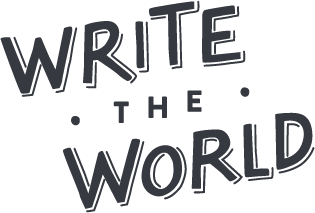Our April writing competition celebrated poetry in all of its various forms–from slam to ode and...
Exploring and writing about nature is one of the most powerful ways to connect with the world around us. “What I really hope readers take away from my piece is that what we see in nature reflects a very real truth,” says Ella Brady, winner of our Nature & Environmental Poetry Competition. “The merciful promise of water after fire, healing after destruction, life after death. Put simply, I want my poem to give people hope.”
Read on to learn more about the competition winners and their work!
Ella Brady, Winner:
In your winning poem, you wrote about the lasting impacts of forest fires in the Great Smoky Mountains. Why did you choose to explore this, and what do you want readers to take away from your piece?
The idea for “Fire//Water” actually began in late spring when my family and I visited the Great Smoky Mountains for the first time in several years. Each hike reminded me of the mountains’ natural beauty but also left me with an unusual sense that something was wrong – where the waterfalls and streams were clear and refreshing, the forests and trails were twisted and tangled. I couldn’t escape the feeling but I couldn’t fully describe it either, so instead I jotted down odd phrases and metaphors as they came to mind. Months later, as I was brainstorming ideas for a competition entry, the experience wouldn’t stop haunting me – so I pulled out my notes and began exploring! What I really hope readers take away from my piece is that what we see in nature reflects a very real truth: the merciful promise of water after fire, healing after destruction, life after death. Put simply, I want my poem to give people hope.
Guest Judge Craig Santos Perez praised how your poem “embodies the movement of fire and water.” How did you create this contrast in your piece?
I did my best to mimic the harshness of fire in the first stanza using trochaic meter – starting each line off with a hard, stressed syllable. The first stanza also maintains a quick, choppy rhythm, with blunt sentences and few commas. In the second stanza, to symbolize the steady flow of water, I tried to soften the tone and slow the pacing by incorporating gentler sounds, longer sentences, and more pauses.
Who are some writers who have inspired your work?
To be honest, I don’t read as much poetry as I’d like to, so I can’t pinpoint any specific influences on my work. There are quite a few poets whose work I truly admire – including Marie Howe’s “Magdalene – The Seven Devils” and Jamaica Kincaid’s prose poem “Girl.” However, my personal writing style has been most closely shaped by my writer friends, my teachers, and – of course – my amazing peers on Write the World.
Katherine Ly, Best Peer Review:
What was your process for reviewing this piece?
I used my first reading of the poem more to just ‘soak in’ all the ideas, keeping a mental note of the phrases I liked and things that could be improved. The second time, I viewed the piece with a more critical (but constructive) lens, annotating each stanza with possible suggestions. It brings me immense joy to witness the remarkable progress of my peers and support them as they continue to grow and succeed as future writers.
The Guest Judge commended the "depth and breadth" of your winning review, which gave the writer lots of suggestions for developing their piece. What advice would you give to others who want to write detailed and helpful peer reviews?
I think it’s important to be very specific in your feedback so the writer knows exactly what they need to improve on. This can be achieved by directly quoting the text and breaking it down in a way that’s easy to understand. General comments like “good job” or “improve this” lack the same level of clarity as detailed, concrete suggestions.
What writing (or editing!) projects are you currently working on?
Currently I’m not working on any writing projects, but I sometimes enjoy writing short stories with my siblings during the holidays!





